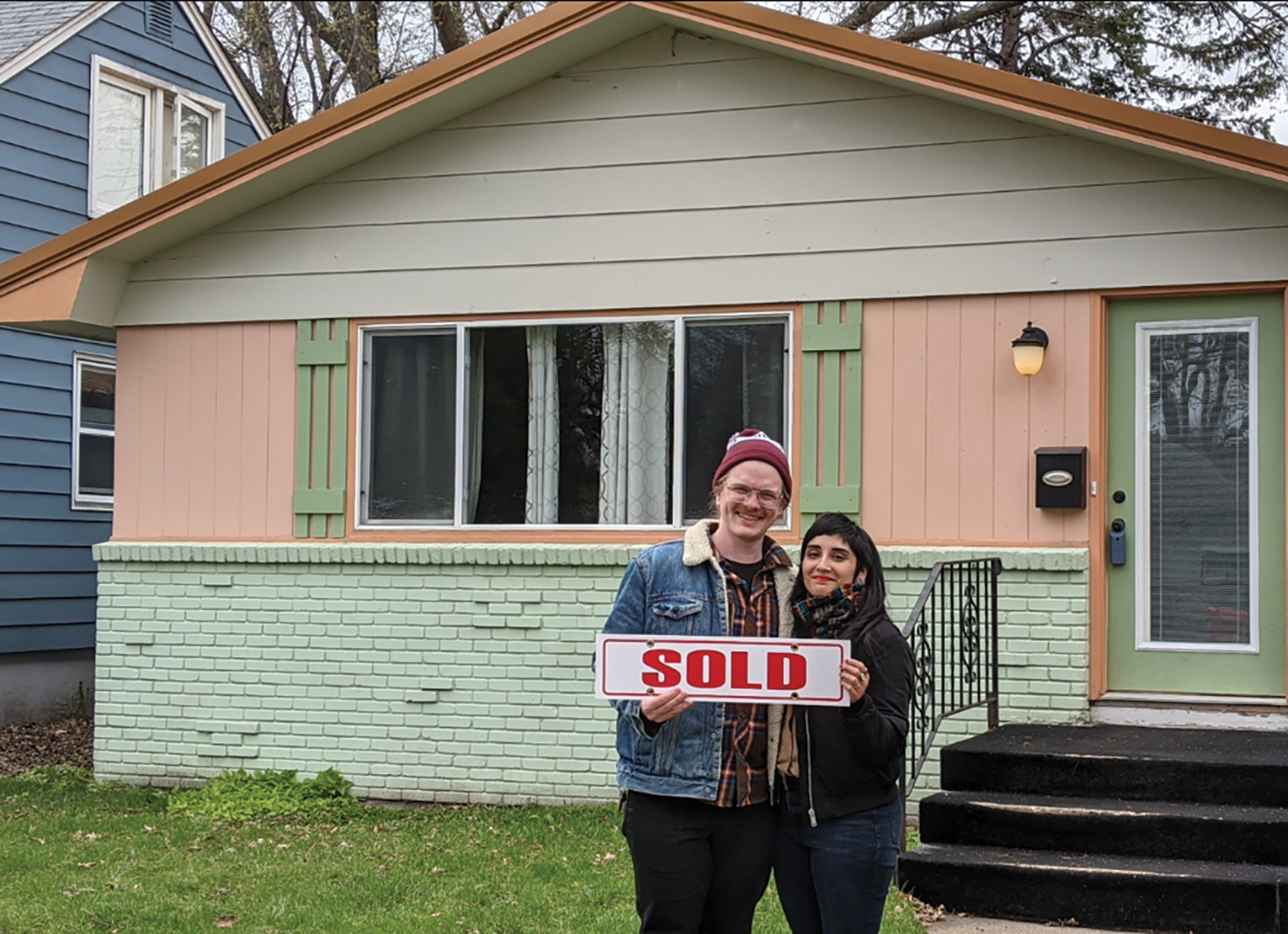
Illustration by Hobbitfoot/Adobe
You’ve heard the horror stories.
Lines for open houses snaking around the block. Dozens of instantaneous offers, many soaring $50,000 over asking price. Rejection, rejection, rejection.
For homebuyers, navigating the current Twin Cities housing market has required surplus persistence and a sky-high tolerance for disappointment. For sellers, it has meant record-shattering profits, but also the looming reality that follows: Now you must enter the buyer gauntlet.
“If you had told me last spring what this spring would be like, I wouldn’t believe you because it’s dramatically more difficult,” reports Lydia Kauppi, a buyer’s agent with Pentz Homes of Keller Williams Realty. “I’ve had clients put in offers $75,000 over and lose; we’ve had to get creative.”
Still Hunting
Rana May had it all planned out. She had purchased her first home for around $70,000 in 2009, just as the market cratered following the previous year’s subprime mortgage crisis. May sold that northeast Minneapolis property last summer with plans to rent while selectively eyeballing her next house. The hunt is lasting longer than expected.
“I was thinking I’d pay off some debt, get my credit score high, and buy another house, but I’ve been looking since [pauses] December,” she says, with a laugh.
As the market grew more competitive, May put down offers on a handful of houses but lost out each time, including once to a “much higher” cash offer. Once determined to stay in north Minneapolis, where she currently lives and works, May says the lack of available homes and cutthroat bidding climate are forcing her to expand her search.
“I’m starting to think about the suburbs and that’s [expletive] crazy,” she says. “My realtor emphasizes: ‘You’re doing the best offer you can, you can’t worry about everyone else.’ It’s almost like a social worker approach to being a realtor.”
Kauppi, who’s routinely seeing sellers mobbed with 30-plus offers, can relate: “It’s really emotionally difficult to give people bad news all the time. I’m pretty competitive, so I generally get to give a lot of good news, but this [year] it’s been a challenge.”
Back in 2009, “there were too many houses to even look at,” May says, noting that prices were relatively cheap and competition was minimal. Now, as she battles in the ultra-competitive $300,000-ish range, the selection is comparatively minuscule and the value doesn’t compare. Some sellers will haphazardly slap down carpeting to pass lower levels off as livable square footage, she observes, while others will claim floating basement toilets are second bathrooms.
“I guess I just don’t understand the market,” May says. “When I started looking in December it seemed like $5,000 over asking was competitive, and all of a sudden people are offering $50,000 over asking—that’s insane!”
How’d We Get Here?
The issue is obvious to buyers, sellers, and agents: inventory.
In March, housing inventory in the 16-county Twin Cities metro hit an 18-year low, with only half the number of homes available compared to the previous year, according to data from the Minneapolis Area Realtors trade group. Properties that do appear are snapped up in 11 days, by median time on the market, and at an all-time high median home price of $337,000—up more than $30,000 from last year. April’s average sale comes in at 103.4% over asking price.
“Anything under $300,000 in the metro right now is competitive; I’ve lost out in multiples even in the $600,000 range in southwest Minneapolis,” Kauppi says. “These buyers are very weary.”
New construction sales jumped 25.2% in March compared to a year ago, Minneapolis Area Realtors reports (with a 2% climb in April), though skyrocketing lumber prices—up 340% (!) year-over-year—are adding an average of $35,872 to the price of every new single-family construction, according to the National Association of Home Builders in late April. Compounding those home-building woes: 71% of contractors say there’s a shortage of skilled tradespeople, per a HomeAdvisor study from last year.
What’s keeping buyers motivated?
A decade of historically low mortgage interest rates continues to nosedive, with a 30-year rate hovering around 3%. Confinement during the COVID-19 pandemic may have forever altered the utility and values associated with homes, theorizes mega-selling realtor and ubiquitous billboard presence Kris Lindahl.
“The meaning of home means so much more today than it ever did before—it became the home office, the workout space, the distance learning location,” he says, adding that buyers who noticed their current house’s shortcomings during lockdown might be eager to trade up.
Given the dramatic spike in U.S. home prices—up to a record median of $380,000 in May, Realtor.com reports—rumblings about a new housing bubble are inevitable; disconcerting Google searches for “when is the housing market going to crash?” were up 2,450% in April. But industry analysts and Federal Reserve chairman Jerome Powell sound resolute in their belief that reforms to lending practices following the 2008 crash mean there’s a rock-solid foundation to today’s market. If true, that means the pressure release valve must come from an influx of fresh inventory.
So, will supply catch up to demand in the Twin Cities, and if so, when?
“I think we’ll soften up a little this year,” Kauppi predicts. “I feel it happening already.”

Provided
Home Sweet Home
Natalia Mendez and Joel Swenson were ready to give up.
Driven by ultra-low interest rates, the south Minneapolis renters began browsing Zillow in February. Soon, they had acquired a pre-approval letter, a realtor, and a harsh reality check about the Twin Cities housing market circa 2021.
“It was like whiplash,” Mendez says. “We’d see a house, think about it, and by that time, it already had a ton of offers.”
The first-time homebuyers had a “come to Jesus moment” with their realtor, who instructed them to consider the $30,000 over asking price they’d need to offer within their budget of around $260,000. That meant waving goodbye to south Minneapolis, where homes in that range came with “a falling down garage” or “a really damp basement,” and refocus their search on the Northside.
In March, after losing one previous bid, Mendez and Swenson lost out again on their dream house in the Cleveland neighborhood. Then, after losing out on yet another house, their realtor texted asking if they still wanted the Cleveland property. The first deal had fallen through, so the couple swooped in on their “perfect, weird, little Midcentury house.”
“It was the perfect timing,” Swenson says, “because I mentally had one more rejection in me.”
Their colorful new home checks all their boxes, with butcher-block countertops, stainless steel appliances, a new roof, and loads of John Waters-esque character. “It looks like it could have dropped from south Florida,” says Mendez, who describes the conclusion of their homebuying saga as “a Cinderella story.”
“Exorbitant prices” steered that saga north of downtown, but Mendez and Swenson say they’re both eager to become Northsiders.
“I love Minneapolis, but I’ll be able to love Minneapolis more fully here,” Mendez says. “I’m excited to not be completely surrounded by white people; I’m not the only brown person on my block, and that feels nice.”






